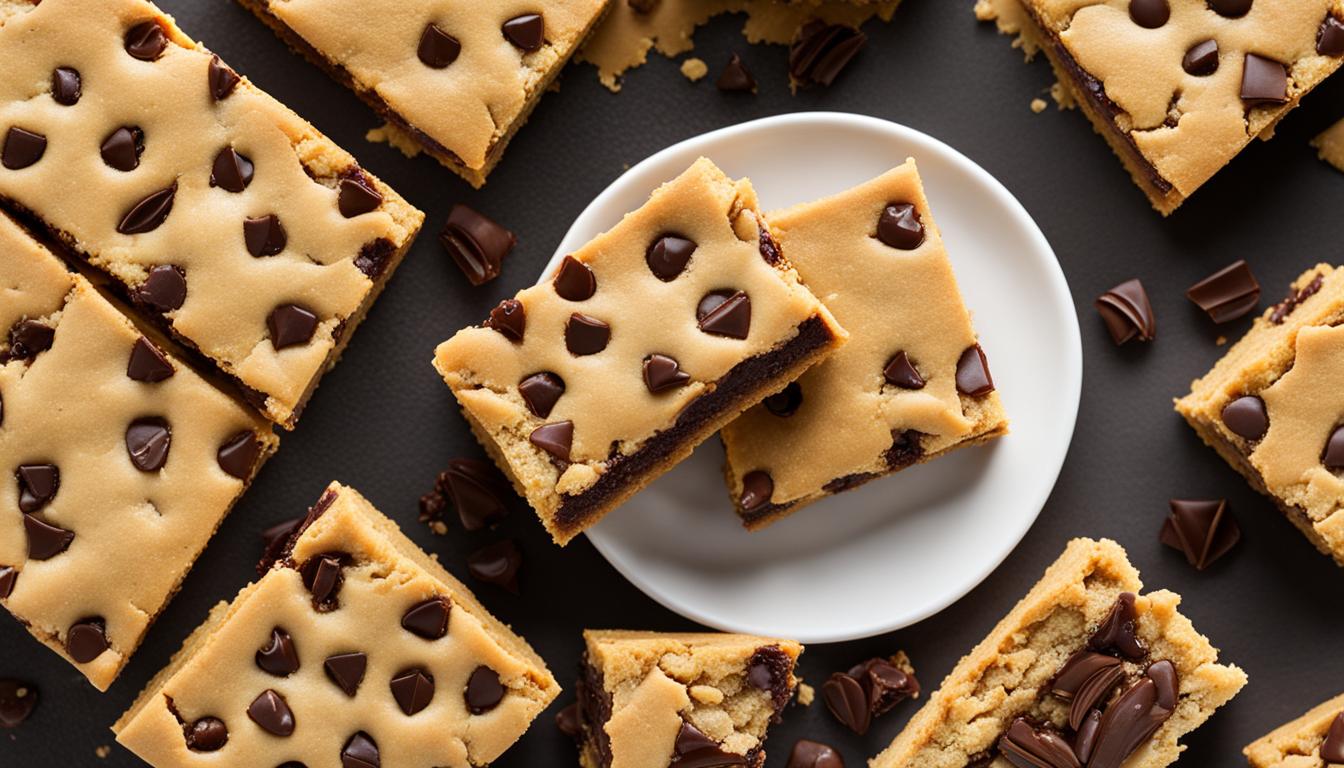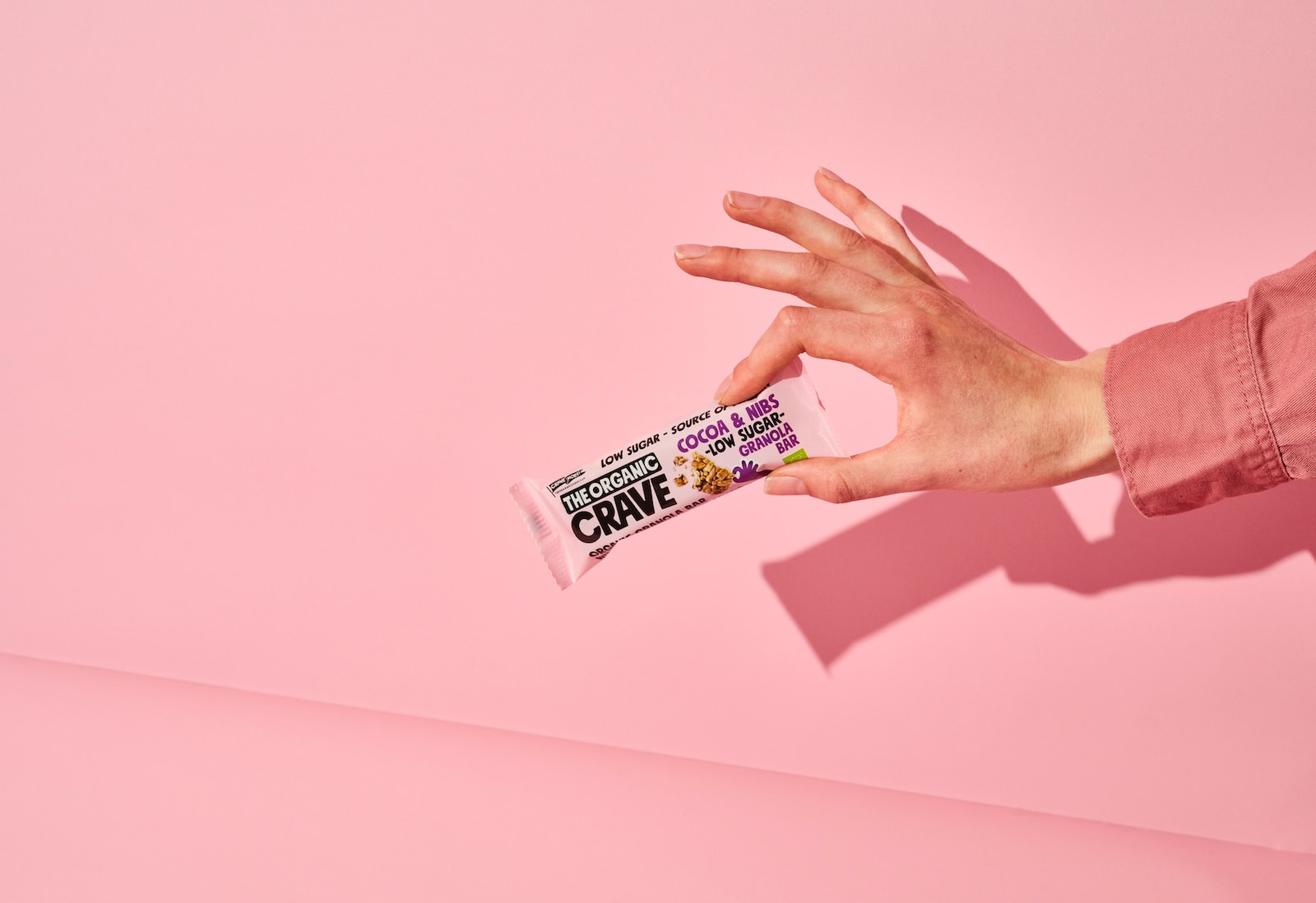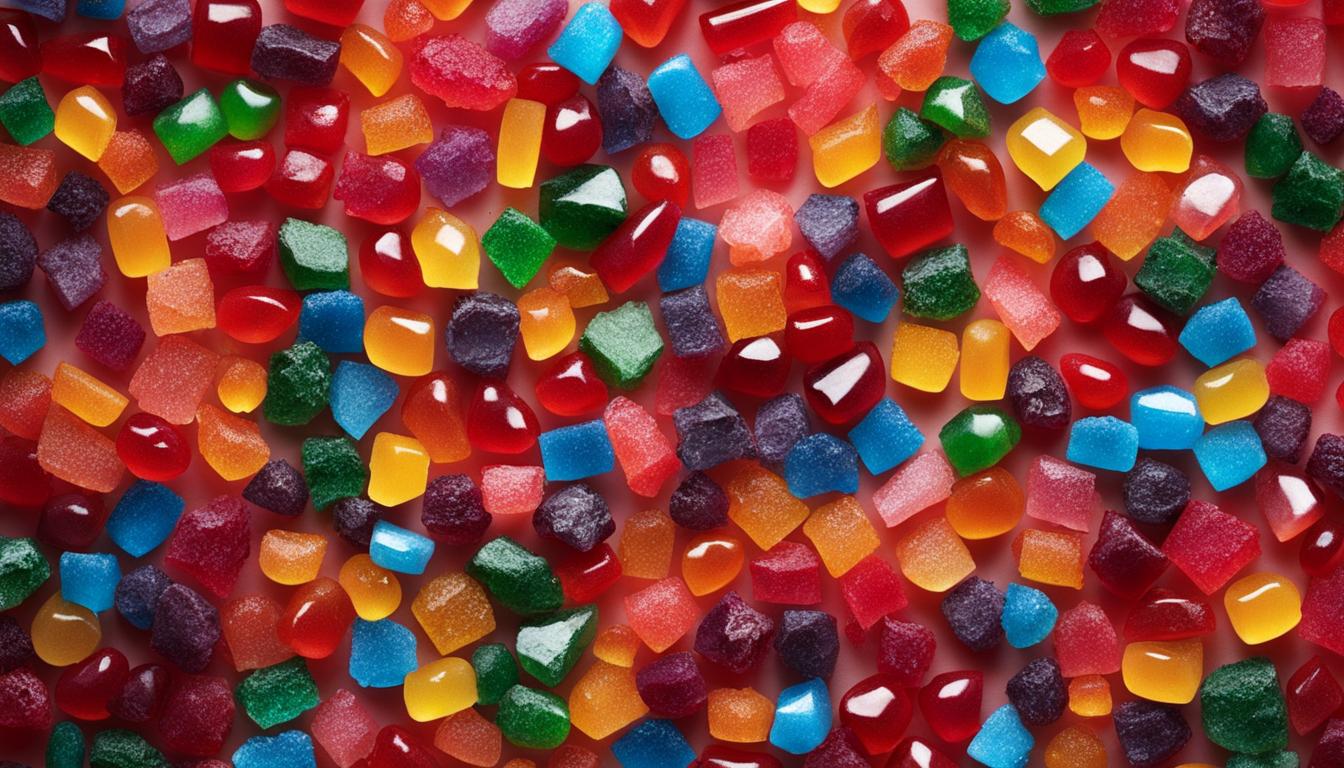Blondies and cookie bars may seem similar at first glance, but there are some key differences that set them apart. If you’ve ever wondered about the distinctions between these two delicious treats, read on to discover the nuances of baking blondies versus baking cookie bars.
Key Takeaways:
- Blondies and cookie bars have distinct differences in their ingredients, flavor profiles, and textures.
- Blondies are made with melted butter, brown sugar, and other ingredients, resulting in a chewy texture and a rich, butterscotch-like taste.
- Cookie bars often use creamed butter and white sugar, leading to a different texture and taste.
- Both blondies and cookie bars can be customized with various mix-ins, adding versatility to these delicious desserts.
- When baking blondies or cookie bars, it’s important to consider tips such as choosing the right pan size and determining the desired level of doneness.
What are Blondies Made of?
Blondies are a delicious type of bar cookie that are made with a few simple ingredients. They typically include butter, brown sugar, eggs, flour, salt, baking powder, vanilla extract, and chocolate chips or other mix-ins. The combination of these ingredients creates a rich and chewy texture, with a butterscotch-like flavor.
The main components of blondies are melted butter and brown sugar. The melted butter contributes to the chewiness of the blondies, while the brown sugar adds a moist and rich taste. Eggs are also added to bind the ingredients together and provide structure to the bars. Flour, salt, and baking powder are included to create the desired texture and help the blondies rise during baking. Finally, vanilla extract enhances the flavor, and chocolate chips or other mix-ins can be added for extra sweetness and variety.
To summarize, blondies are made with a combination of butter, brown sugar, eggs, flour, salt, baking powder, vanilla extract, and chocolate chips or other mix-ins. These simple ingredients come together to create a deliciously chewy dessert that is perfect for any occasion.
| Ingredients | Quantity |
|---|---|
| Butter | 1 cup |
| Brown Sugar | 1 cup |
| Eggs | 2 |
| Flour | 1 ¾ cups |
| Salt | ½ teaspoon |
| Baking Powder | 1 teaspoon |
| Vanilla Extract | 1 teaspoon |
| Chocolate Chips (or other mix-ins) | 1 cup |
How to Make Blondies
If you’re looking to make delicious blondies, you’re in the right place. This section will guide you through the step-by-step process of creating these delectable treats. With their rich butterscotch flavor and chewy texture, blondies are a favorite dessert for many. Here’s a simple recipe that you can follow:
Ingredients:
- 1 cup melted butter
- 1 ½ cups brown sugar
- 2 eggs
- 2 teaspoons vanilla extract
- ½ teaspoon salt
- 1 teaspoon baking powder
- 2 cups all-purpose flour
- Mix-ins of your choice (e.g., chocolate chips, nuts, or dried fruits)
Instructions:
- Preheat your oven to 350°F (175°C) and grease a metal baking pan.
- In a large bowl, mix the melted butter and brown sugar until well combined.
- Add the eggs, one at a time, stirring after each addition. Then, add the vanilla extract.
- In a separate bowl, whisk together the salt, baking powder, and flour. Gradually add the dry ingredients to the wet ingredients, mixing until just combined.
- Stir in your desired mix-ins, such as chocolate chips or nuts.
- Pour the batter into the prepared baking pan and spread it evenly.
- Bake for about 25-30 minutes, or until the edges are golden brown and the center is set.
- Allow the blondies to cool completely before slicing and serving.
That’s it! You now have a delicious batch of homemade blondies ready to enjoy. Feel free to get creative with your mix-ins and experiment with different flavors. Whether you prefer classic chocolate chips or want to try something unique like dried cranberries or shredded coconut, the possibilities are endless.
Troubleshooting Tips
While making blondies is relatively straightforward, there are a few common issues that you may encounter. Here are some troubleshooting tips to help you achieve the perfect blondies:
| Issue | Possible Solution |
|---|---|
| Blondies are too dry or crumbly | Ensure that you’re using enough melted butter and not overbaking the blondies. |
| Blondies are too gooey or undercooked | Make sure you’re baking the blondies for the recommended time and allowing them to cool properly before slicing. |
| Blondies are too sweet | Consider reducing the amount of sugar in the recipe or balancing the sweetness with salt or other flavors. |
| Blondies are too flat | Check that your baking powder is fresh and hasn’t expired. Also, avoid overmixing the batter, as this can result in flat blondies. |
By following these tips, you’ll be able to troubleshoot any potential issues and ensure that your blondies turn out perfectly every time. Happy baking!
Baking Pan Size for Blondies
Choosing the right baking pan size is crucial for achieving perfectly baked blondies. While many blondie recipes are designed for either an 8×8 inch or 9×9 inch pan, a 9×13 inch pan is also commonly used. The choice of pan size can affect the thickness and texture of the blondies.
Using an 8×8 inch or 9×9 inch pan will result in thicker blondies, while a 9×13 inch pan will yield thinner blondies. The thickness of the blondies can impact their baking time and overall texture. Thicker blondies may require a slightly longer baking time to ensure they are fully cooked, while thinner blondies may bake faster.
When using a smaller pan size, it’s important to monitor the baking time closely to prevent the blondies from burning. The baking time may need to be increased slightly to ensure that the blondies are fully cooked in the center. It’s recommended to test the blondies with a toothpick or cake tester inserted in the center to check for doneness. If it comes out with a few moist crumbs, the blondies are ready to be removed from the oven.
| Baking Pan Size | Blondie Thickness | Baking Time |
|---|---|---|
| 8×8 inch | Thick | 25-30 minutes |
| 9×9 inch | Thick | 20-25 minutes |
| 9×13 inch | Thin | 15-20 minutes |
To ensure easy removal of the blondies from the pan, it’s recommended to line the pan with parchment paper or grease it with butter or cooking spray. This will prevent sticking and help in maintaining the shape of the blondies. With the right pan size and preparation, you’ll be able to enjoy perfectly baked blondies every time.
How Can I Tell When Blondies are Done Baking?
When it comes to baking blondies, achieving the perfect texture is key. The baking time for blondies depends on the desired outcome, whether you prefer chewy blondies with a gooey center or cakey blondies with a firmer texture. Here’s how you can tell when your blondies are done baking:
1. Look for golden edges
One of the signs that your blondies are nearing completion is when the edges turn a lovely golden color. This indicates that the sugars in the blondie have caramelized and created a delicious crust. Keep an eye on the edges as they start to brown, but don’t rely solely on this visual cue.
2. Check the center
The center of the blondie should be slightly underdone when you take it out of the oven. Gently press your finger or a toothpick into the center to see if it feels slightly jiggly or soft. The residual heat will continue to cook the blondie, so the center will firm up as it cools.
3. Consider the texture
If you prefer chewy blondies, you’ll want to remove them from the oven when the edges are set but the center is still slightly underbaked. On the other hand, if you prefer cakey blondies, bake them a bit longer until the center feels relatively firm when pressed with a finger.
Remember that baking times can vary depending on your oven and the size of the baking pan. It’s always best to rely on visual and tactile cues rather than strict time guidelines. With a bit of practice, you’ll become a blondie-baking expert!
How Long Do Blondies Typically Stay Fresh at Room Temperature?
Blondies, like many baked goods, have a limited shelf life at room temperature. To keep your blondies fresh and delicious, it is important to store them properly. When stored in an airtight container, blondies can typically stay fresh at room temperature for 3-4 days. However, if you want to extend their freshness, it is recommended to store them in the fridge.
When refrigerated, blondies can stay fresh for up to a week. The cool temperature helps to slow down the natural process of staling. To prevent your blondies from drying out in the fridge, make sure to store them in an airtight container or wrap them tightly in plastic wrap. This will help to maintain their moisture and texture.
If you have a large batch of blondies or want to store them for a longer period of time, freezing is an option. To freeze blondies, wrap them individually in foil or plastic wrap and place them in a sealed plastic bag. Frozen blondies can stay fresh for several weeks. When you’re ready to enjoy them, thaw the blondies at room temperature or refresh them in a preheated 325°F oven for 5-10 minutes.
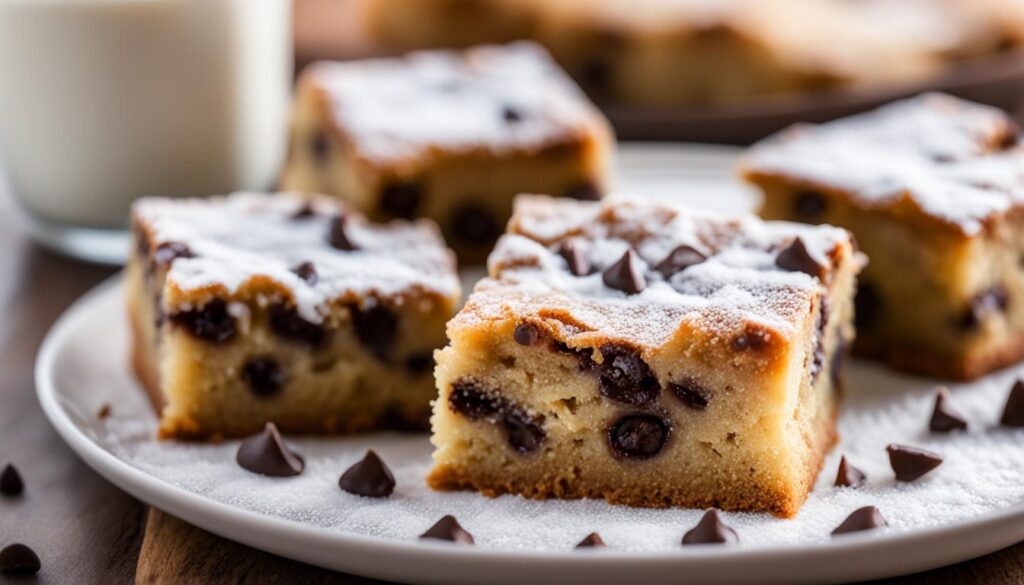
Table: Blondie Storage Options and Durability
| Storage Method | Duration |
|---|---|
| Room Temperature (Airtight Container) | 3-4 days |
| Refrigerator (Airtight Container) | Up to 1 week |
| Freezer (Individually Wrapped) | Several weeks |
By following these storage guidelines, you can help maintain the freshness and quality of your blondies, ensuring that every bite is just as delicious as the first.
Popular Blondie Variations and Mix-Ins
Blondies are a versatile dessert that can be customized with a variety of mix-ins to create different flavors and textures. Here are some popular variations and mix-ins that can take your blondie recipe to the next level:
1. Chocolate Chips
Chocolate chips are a classic addition to blondies, providing bursts of sweetness and gooeyness in every bite. Whether it’s traditional semisweet chocolate chips or variations like dark chocolate, milk chocolate, or even flavored chips, such as mint or caramel, adding chocolate chips is always a crowd-pleaser.
2. Nuts
Nuts, such as pecans, walnuts, or almonds, add a delightful crunch and nutty flavor to blondies. They complement the chewy texture and richness of the blondie and can be either chopped or left whole for a more prominent presence in every mouthful.
3. White Chocolate Chips
For a sweeter and creamier twist on the classic blondie, white chocolate chips make a delicious addition. They bring a rich vanilla flavor and a smooth melt-in-your-mouth quality that pairs well with the butterscotch-like taste of the blondie.
Other popular mix-ins for blondies include butterscotch chips, dried cranberries, Nutella, cinnamon sugar, salted caramel, sprinkles, pretzels, potato chips, and coconut. Feel free to experiment with different combinations or create your own unique mix-ins to customize your blondies according to your taste preferences. Just remember to follow the basic blondie recipe and adjust the quantities of the mix-ins accordingly.
| Mix-Ins | Description |
|---|---|
| Chocolate Chips | Classic addition, provides bursts of sweetness and gooeyness |
| Nuts | Adds crunch and nutty flavor |
| White Chocolate Chips | Sweeter and creamier twist, rich vanilla flavor |
| Butterscotch Chips | Brings a butterscotch-like taste |
| Dried Cranberries | Provides a tart and fruity element |
| Nutella | Introduces a creamy hazelnut-chocolate flavor |
| Cinnamon Sugar | Delivers warm and comforting notes of cinnamon |
| Salted Caramel | Adds a rich and savory sweetness |
| Sprinkles | Brings color and a festive touch |
| Pretzels | Creates a salty and crunchy contrast |
| Potato Chips | Surprising and unique addition, adds a salty crunch |
| Coconut | Provides a tropical and chewy texture |
Creamed vs. Melted Butter: The Texture Difference in Blondies
One key factor that can affect the texture of blondies is the choice between creamed butter and melted butter. Most blondie recipes opt for melted butter, as it contributes to a chewy texture that many prefer. Creaming butter, on the other hand, introduces air into the batter, resulting in a more crumbly texture. It’s worth noting that certain recipes, such as Dorie Greenspan’s and Ina Garten’s, use creamed butter, which can yield blondies with a different texture compared to traditional melted butter blondies. However, melted butter remains the go-to choice for those seeking a chewier blondie.
While melted butter is generally preferred for achieving chewiness, it’s important to highlight that the ratio of sugar in the recipe also plays a role. A high ratio of sugar can contribute to a chewier texture in blondies, regardless of whether creamed or melted butter is used. Therefore, it’s crucial to consider both the butter and sugar content when aiming for the desired texture in your blondie recipes.
To summarize, the choice between creamed and melted butter can significantly impact the texture of blondies. Melted butter is typically favored for achieving a chewy consistency, while creamed butter can result in a more crumbly texture. Ultimately, it’s a matter of personal preference and the specific recipe being used. Experimenting with different butter techniques and ratios of sugar can help you discover your ideal blondie texture.
Table: Creamed Butter vs. Melted Butter in Blondies
| Texture | Creamed Butter | Melted Butter |
|---|---|---|
| Chewiness | Crumbly | Chewy |
| Sugar Content Impact | Less pronounced | More pronounced |
| Common Recipes | Dorie Greenspan’s, Ina Garten’s | Traditional blondie recipes |
The Role of Eggs in Blondie Recipes
Eggs play a crucial role in creating the perfect texture in blondie recipes. The addition of eggs to the batter not only helps bind the ingredients together but also contributes to the overall structure and moisture content of the blondies. The number of eggs used and whether whole eggs or just egg yolks are incorporated can significantly impact the final result.
When it comes to achieving a rich and chewy texture in blondies, recipes that incorporate extra egg yolks often excel. The additional yolks add richness and contribute to a denser, fudgier consistency. Blondie recipes from renowned bakers, such as Broma Bakery and Sarah Kieffer, are known for their use of extra egg yolks and are highly rated for their irresistibly gooey center and chewy bite.
On the other hand, if a cakey blondie is desired, using more eggs overall can help achieve a lighter and more cake-like texture. The ratio of eggs to other ingredients, such as flour and sugar, can be adjusted to achieve the desired consistency. Experimenting with the number of eggs in a recipe allows for customization and the creation of blondies with varying textures.
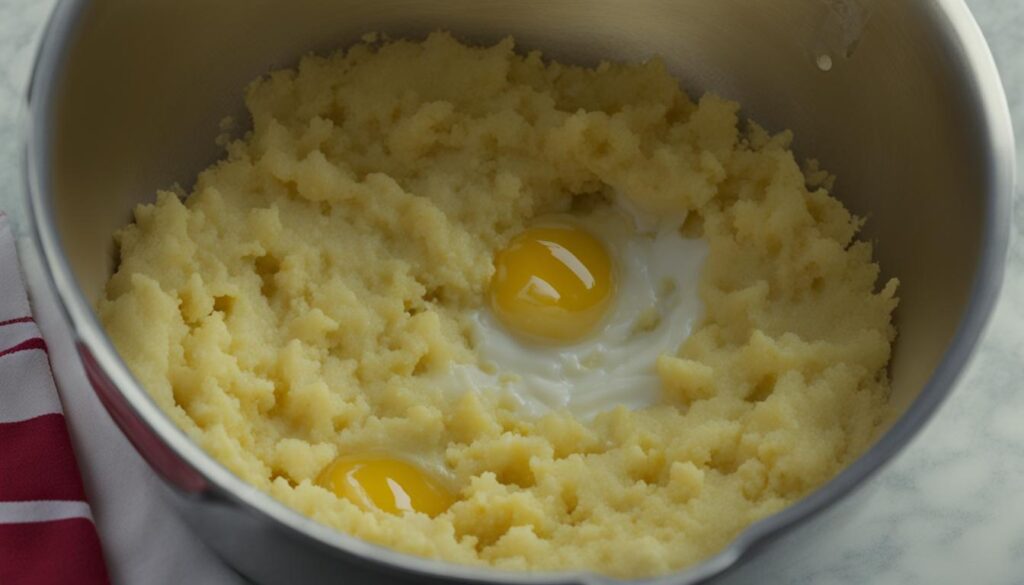
Comparing Blondie Textures: Extra Yolks vs. More Eggs
| Blondie Texture | Recipe Example |
|---|---|
| Rich and Chewy | Broma Bakery’s Extra Yolk Blondies |
| Light and Cakey | Classic Blondie Recipe with More Eggs |
Table: Comparing blondie textures achieved through different egg variations.
Conclusion
In conclusion, blondies and cookie bars offer unique and delicious treats with their own distinct characteristics. While blondies are crafted with melted butter, brown sugar, and other key ingredients, they deliver a chewy texture and a delectable butterscotch-like flavor. On the flip side, cookie bars often utilize creamed butter and white sugar, resulting in a different texture and taste altogether.
These delectable desserts can be customized to suit individual preferences by incorporating various mix-ins, such as chocolate chips, nuts, or even coconut. When baking either a blondie or a cookie bar, it is crucial to consider factors like the ideal pan size and determining the desired level of doneness. These baking tips will help ensure optimal results every time.
Whether you’re drawn to the rich, chewy bliss of a blondie or the classic comfort of a cookie bar, both options offer versatility and a plethora of flavors to explore. So why not try your hand at baking your favorite variation, experiment with different mix-ins, and savor the delightful flavor and texture differences that come with each delightful bite?
FAQ
What sets a blondie apart from a cookie bar?
Blondies are similar to brownies but do not contain cocoa. They are made with melted butter and brown sugar, resulting in a chewy texture and a rich, butterscotch-like flavor. Cookie bars, on the other hand, typically use creamed butter and white sugar, resulting in a different texture and taste.
What are blondies made of?
Blondies are made with ingredients such as butter, brown sugar, eggs, flour, salt, baking powder, vanilla extract, and optional mix-ins like chocolate chips. The brown sugar provides flavor and moisture, while other ingredients contribute to the texture and taste of the blondies.
How do I make blondies?
To make blondies, melt butter and whisk in sugar, eggs, vanilla extract, salt, baking powder, and flour until smooth. Optional mix-ins like chocolate chips can be added. Pour the batter into a prepared metal pan and bake until the edges are set and the center is slightly jiggly. Allow the blondies to cool before slicing and serving.
What is the ideal baking pan size for blondies?
Blondies can be baked in various pan sizes, commonly 8×8 or 9×9 for single recipes or 9×13 for larger batches. The recipe can be adjusted by doubling or halving the ingredients to fit different pan sizes. It’s important to line the pan with parchment paper or grease it to prevent sticking.
How can I tell when blondies are done baking?
The baking time for blondies depends on the desired texture. For chewy blondies, look for golden edges and a slightly underdone center. The blondies should not jiggle, but they may feel soft when pressed. For cakey blondies, bake them until the center is set and feels relatively firm when pressed with a finger.
How long do blondies typically stay fresh at room temperature?
Blondies can stay fresh at room temperature for 3-4 days when stored in an airtight container. For longer freshness, it is recommended to store them in the fridge. Blondies can also be frozen for several weeks if wrapped properly.
What are some popular blondie variations or mix-ins?
Popular mix-ins for blondies include chocolate chips, white chocolate chips, butterscotch chips, nuts, dried cranberries, Nutella, cinnamon sugar, salted caramel, sprinkles, pretzels, potato chips, and coconut. The mix-ins can be customized based on personal preferences and creativity.
What is the difference between creamed and melted butter in blondies?
Most blondie recipes use melted butter, which contributes to a chewy texture. Creaming butter, on the other hand, introduces air and results in a more crumbly texture. Melted butter is generally preferred for a chewier blondie, although a high ratio of sugar can also contribute to chewiness.
What is the role of eggs in blondie recipes?
Eggs play an important role in blondie recipes. The use of extra yolks can result in a richer, more chewy texture. Blondie recipes that incorporate extra yolks often rank highly in taste tests. On the other hand, recipes that use more eggs overall can result in a cakey texture. The ratio of eggs to flour and sugar varies among recipes and can impact the final texture.
 Skip to main content
Skip to main content